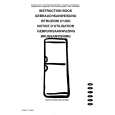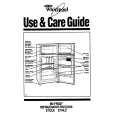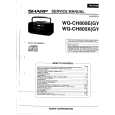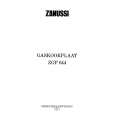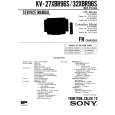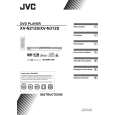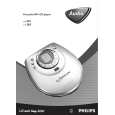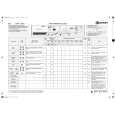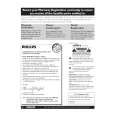|
|
|
Kategorie
|
|
Informacje
|
|
Polecamy
|
|
|
 |
|
|
Dla tego produktu nie napisano jeszcze recenzji!
 ;
Dokładna dokumentacja, pomogła w szybkiej naprawie telewizora. Dziękuję!
 ;
jedyne do czego mogę mieć zastrzeżenie to jakość zdjęć zawartych w przesłanej instrukcji serwisowej ponieważ są fatalnej jakości, praktycznie nieczytelne. tak poza tym jestem zadowolony to jest to czego szukałem.
 ;
Wszystko w porządku.
Instrukcja czytelna i kompletna.
Dziękuję.
all right!
thank you.
 ;
Bardzo dobra instrukcja. Zawiera wszystko co potrzeba, polecam!
 ;
Instrukcja jest OK. Schematy czytelne, opisane niektóre procedury.
EN 130
9.
FM23, FM24, FM33
Circuit Descriptions, List of Abbreviations, and IC Data Sheets
a corresponding voltage is generated to supply the fans. This FAN_SUPPLY_x voltage is proportional to the duty cycle of the corresponding PWM signal. The OTC senses the temperature every five s. If it has reached the alarm temperature, and this value has been measured three times consequently, the monitor will go into protection and a error-code is generated. 9.2.5 Pre-conditioner (Diagram P5) Warning: the pre-conditioner does not provide mains isolation. Introduction The European Law describes a reduction of mains harmonics for apparatus with a power consumption above 75 W. Therefore the pre-conditioner is designed. This module serves as the interface between the mains input and the V_s/V_a supply. The advantage of a pre-conditioner is (compared to a mains input filter): � Reduction of mains harmonics to legal limits. � Lower mains current for the same output power. � Power factor close to 1. � Stable regulated output. � Small and low weight.
resistance of VDR 3400 will be very low, causing fuse 1400 to interrupt. At a lightning surge on both phases with respect to chassis ground, mains filter 5401 will form a high resistance, through which the voltage will rise very sharply. To prevent flashovers, a spark-gap/ resistor combination (items 1402 and 3404) is implemented. 9.2.3 Standby Supply (Diagram P2) Introduction The standby supply is a separate power supply, meant to reduce power consumption of the plasma monitor in standby mode. The standby supply operates on the AC voltage from the input filter part, and has to deliver a stable 9 V voltage. It has three "mains isolated" outputs, and one "hot" output: � +9V_STBY (called +9V_STBY_SW after the "on/off" switch 1101), to power the "on/off" relays in the pre-conditioner. � +5V_STBY_SW (derived from the +9V_STBY via voltage regulator 7540) � +3V3_STBY_SW, to supply the microprocessor of the PDP. � 25V_HOT, to supply the LLC controller. The standby supply is also connected to the pre-conditioner output (400V_HOT), in order to deliver a voltage as long as possible, after switch "off" and at mains dips. Operation The standby supply is always operational when the AC input voltage is present, so even when the POWER switch is in the "off" position. After a small rectifier (D6512/6513) and buffer capacitor (C2503), the generated DC voltage is applied to an SMPS (Switched Mode Power Supply). The SMPS itself is build around IC7500, a "TINYSwitch" TNY256. This IC contains a control circuitry and a power MOSFET. It uses a simple "on/off" control loop to regulate the output voltage. The generated +9V_STBY voltage at the secondary side is rectified by D6504 and smoothed by C2508. The supply for the TNY256 (pin 5) comes via resistor R3506 and L5500. By using secondary sensing, a very accurate standby voltage and high efficiency is achieved. The sensing circuit uses a TL431 as reference voltage/error amplifier. Optocoupler 7501 is used for the mains isolation. When the output voltage rises, the reference voltage on the TL431 will exceed 2.5 V and the current through this device and the optocoupler LED will increase. By this, the optocoupler transistor will conduct more. When this current (at pin 4 of IC7500) exceeds 50 A, the MOSFET is switched "off", and the output voltage will drop. When this current drops below 40 A, the MOSFET is switched "on" again. During the time that the MOSFET is "on", the IC has no supply voltage. To overcome this period, the energy stored in the bypass capacitor C2513 is used. This capacitor is charged during the time the MOSFET is "on". As the TNY256 is sensitive for transients (mains spikes), a "peak clamp" circuit (300 V zenerdiodes 6501 and 6502) is used to limit the voltage to a safe level. 9.2.4 Fan Control (Optional, Diagram P4) For ceiling mount or portrait-mode use, there is foreseen in four (two for the FM33) optional fans. The temperature within the monitor is measured via a sensor (R3372, KTY81) on the PSU. This sensor is, via A/D converter (item 7530 on the SCAVIO), connected to the OTC. According the temperature within the cabinet, the OTC-software will drive the PWM output of the OTC. The output (FAN_SP_x) is connected to the PSU, where
The input voltage of the pre-conditioner is universal, between 95 and 264 V_ac. The output is 400 V_dc (400V_HOT) with a maximum output power of 300 W (FM23) or 400 W (FM24 and FM33). This output voltage is delivered to the V_s supply. Operation Start-up The two relays (1450 and 1460, diagram P2) are controlled via the SUPPLY_ON signal. This signal will become "high" when the +9V_STBY_SW, the STANDBY (from the OTC), and the LATCH signal are "ok". It then switches indirect relay 1450 via transistor 7460 and so enables the use of a small, low voltage, switch. To protect rectifier 6600 and relay 1450, the inrush current is limited to a maximum of 20 A by charging the capacitor 2605 through a PTC (items 3450 and 3451) and an NTC (items 3452 and/or 3453). After approximately 0.5 sec, relay 1460 is activated. This relay will short the PTCs. The advantage of using an NTC, is the fact that the resistance varies with the current and hence the mains voltage. At a high mains voltage, the current is lower for the same power. Two clamp diodes 6605 and 6606, charge output capacitor C2616 to the peak voltage of the mains input. During normal operation, both diodes are blocked because of the output voltage of 400 V_dc, and will only conduct if there is a mains spike or an output dip. Capacitor 2616 then delivers, via R3668, the start-up voltage at pin 16 of IC7650. After the start-up cycle, IC7650 is supplied via auxiliary winding 1-2. Capacitor C2663 is charged during the cycle that MOSFET 7610 conducts. While MOSFET 7610 is switched "off", this capacitor transfers its energy via D6661 to: � The input of stabiliser IC7660 (for FM23 and FM24). � The input of DC-DC converter IC7661 (for FM33). This circuit was changed for a better efficiency. The output voltage of this IC is fed via D6665 to V_cc pin 12 of IC7650.The slow start function is realised by the circuit consisting of transistor 7654, D6654, R3654, and C2654. Normal Operation An up-converter circuit is used for the pre-conditioner. The switching frequency of the converter is chosen much higher than the mains frequency. It is therefore possible to consider the supply as constant, during every high frequency period,
|
|
 |
> |
|

